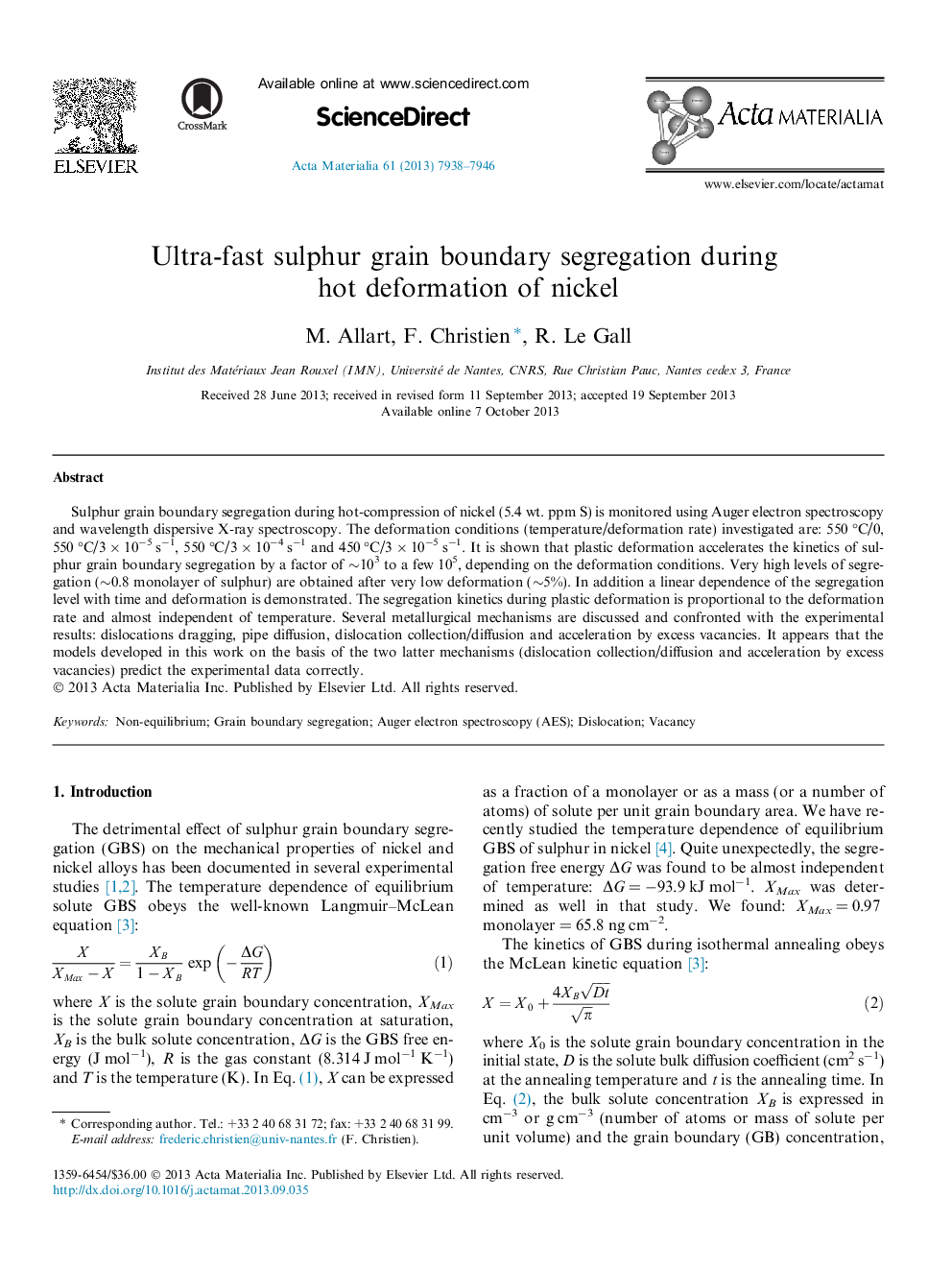| Article ID | Journal | Published Year | Pages | File Type |
|---|---|---|---|---|
| 1446213 | Acta Materialia | 2013 | 9 Pages |
Sulphur grain boundary segregation during hot-compression of nickel (5.4 wt. ppm S) is monitored using Auger electron spectroscopy and wavelength dispersive X-ray spectroscopy. The deformation conditions (temperature/deformation rate) investigated are: 550 °C/0, 550 °C/3 × 10−5 s−1, 550 °C/3 × 10−4 s−1 and 450 °C/3 × 10−5 s−1. It is shown that plastic deformation accelerates the kinetics of sulphur grain boundary segregation by a factor of ∼103 to a few 105, depending on the deformation conditions. Very high levels of segregation (∼0.8 monolayer of sulphur) are obtained after very low deformation (∼5%). In addition a linear dependence of the segregation level with time and deformation is demonstrated. The segregation kinetics during plastic deformation is proportional to the deformation rate and almost independent of temperature. Several metallurgical mechanisms are discussed and confronted with the experimental results: dislocations dragging, pipe diffusion, dislocation collection/diffusion and acceleration by excess vacancies. It appears that the models developed in this work on the basis of the two latter mechanisms (dislocation collection/diffusion and acceleration by excess vacancies) predict the experimental data correctly.
